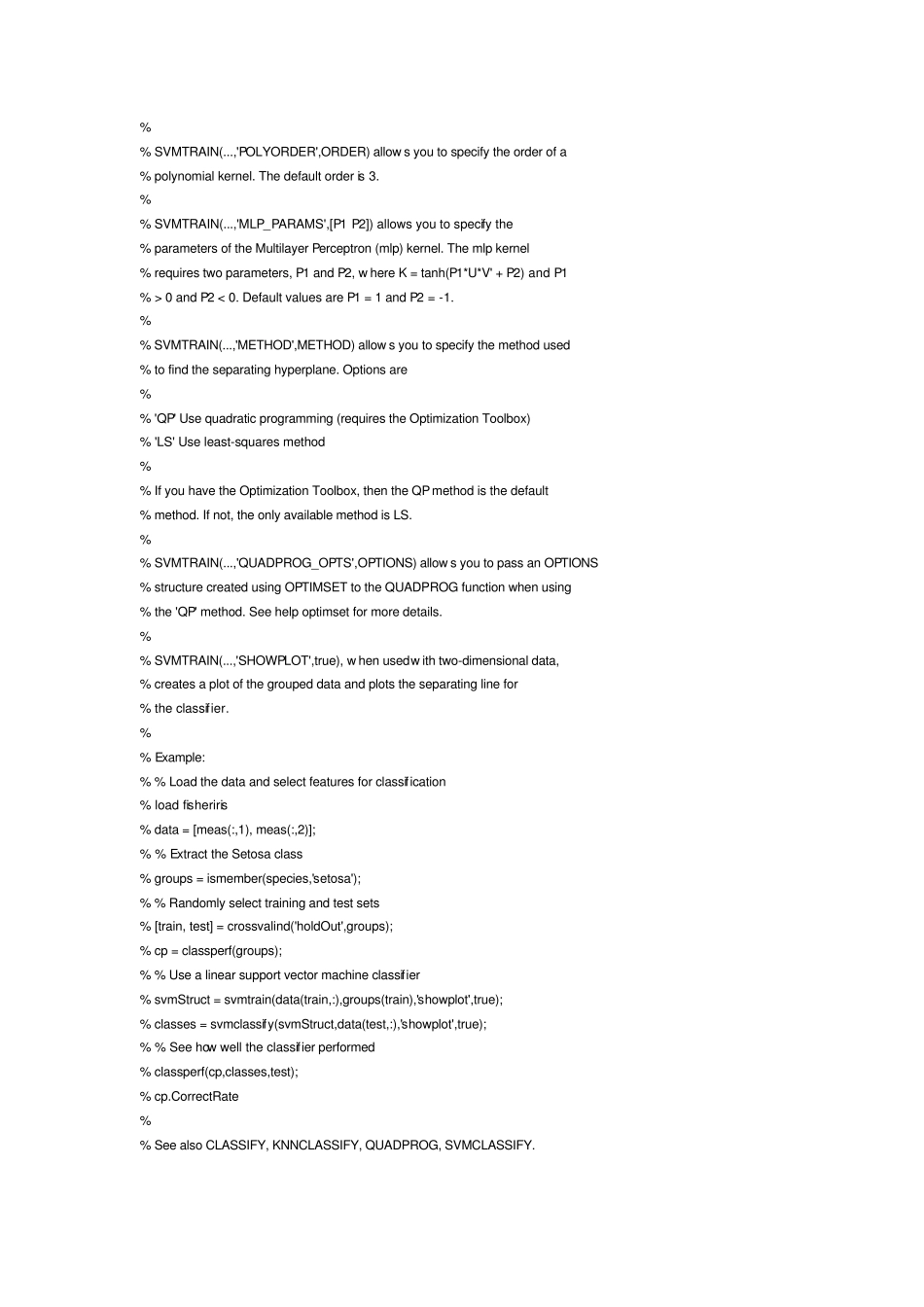edit svmtrain >>edit svmclassify >>edit svmpredict function [svm_struct, svIndex] = svmtrain(training, groupnames, varargin) %SVMTRAIN trains a support vector machine classifier % % SVMStruct = SVMTRAIN(TRAINING,GROUP) trains a support vector machine % classifier using data TRAINING taken from tw o groups given by GROUP. % SVMStruct contains information about the trained classifier that is % used by SVMCLASSIFY for classification. GROUP is a column vector of % values of the same length as TRAINING that defines two groups. Each % element of GROUP specifies the group the corresponding row of TRAINING % belongs to. GROUP can be a numeric vector, a string array, or a cell % array of strings. SVMTRAIN treats NaNs or empty strings in GROUP as % missing values and ignores the corresponding rows of TRAINING. % % SVMTRAIN(...,'KERNEL_FUNCTION',KFUN) allows you to specify the kernel % function KFUN used to map the training data into kernel space. The % default kernel function is the dot product. KFUN can be one of the % follow ing strings or a function handle: % % 'linear' Linear kernel or dot product % 'quadratic' Quadratic kernel % 'polynomial' Polynomial kernel (default order 3) % 'rbf' Gaussian Radial Basis Function kernel % 'mlp' Multilayer Perceptron kernel (default scale 1) % function A kernel function specified using @, % for example @KFUN, or an anonymous function % % A kernel function must be of the form % % function K = KFUN(U, V) % % The returned value, K, is a matrix of size M-by-N, where U and V have M % and N rows respectively. If KFUN is parameterized, you can use % anonymous functions to capture the problem-dependent parameters. For % example, suppose that your kernel function...


